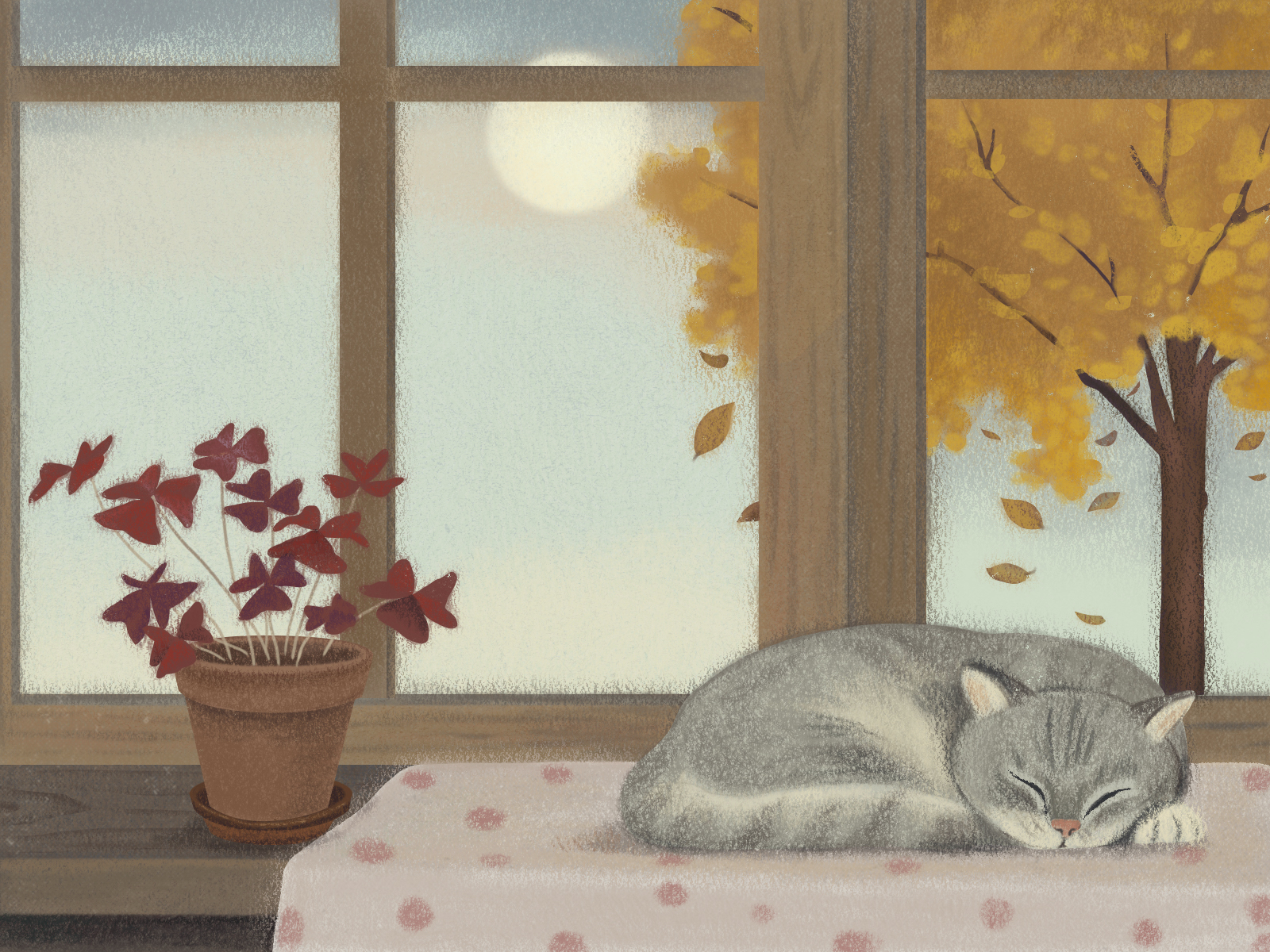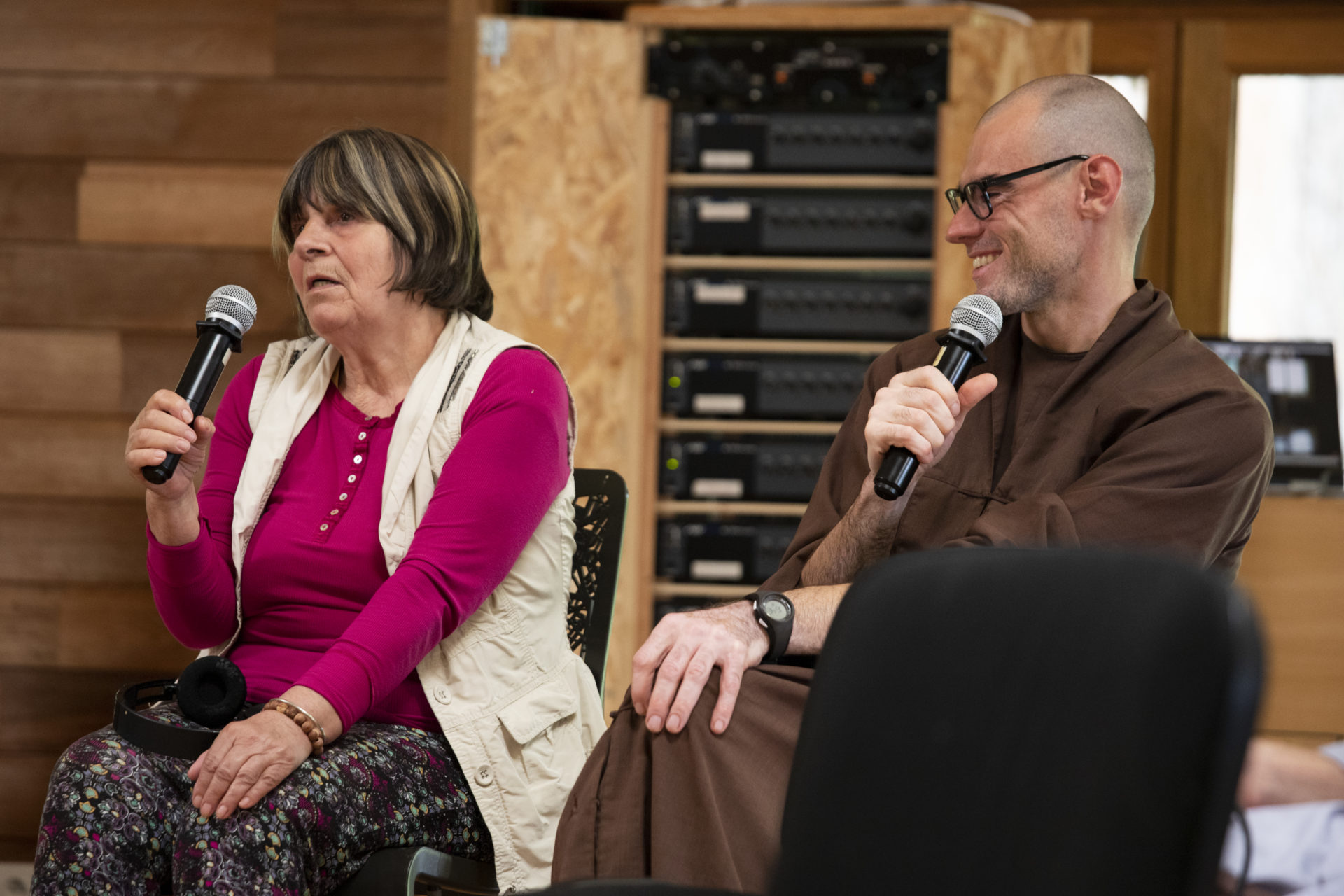Best of the Haiku Challenge (October 2023)
Announcing the winning poems from Tricycle’s monthly challenge The post Best of the Haiku Challenge (October 2023) appeared first on Tricycle: The Buddhist Review.

Although the broader community of poets shares them as common property, the traditional season words of haiku allow for a remarkable range of expression. They can be used to create seasonal feeling, evoke humor, lodge a protest, or explore the inner recesses of our emotional lives—to name only a few possibilities. The winning and honorable mention haiku for last month’s challenge covered an unusually broad spectrum of meanings and emotions, using just 17 syllables and the words “autumn sun.”
Marcia Burton finds a melancholy beauty in the sunlight “filtering through the nursery” where a baby is falling asleep. Nancy Winkler’s humorous image of a low sun giving her “the side-eye” captures the shortness of an autumn afternoon.Jill Johnson goes for broke in her desperation to get the sun back on a dismal fall day—“no questions asked.”
Congratulations to all! To read additional poems of merit from recent months, visit our Tricycle Haiku Challenge group on Facebook.
You can submit a haiku for the November challenge here.
***
WINNER:
soothing the baby
the autumn sun filtering
through the nursery
— Marcia Burton
Our first impression of a good haiku is often that it touches us in some palpable way. That it is beautiful, poignant, or bittersweet—sometimes all of these at once. Because haiku are so short, they naturally invite a second or third reading, and this is where it gets interesting. Nearly always there is some further dimension to a poem.
An infant has been put down for a nap in the late afternoon. The nursery is dim, lit only by the sun filtering through the drapes. The baby cries briefly on being placed in the crib, but soon grows quiet, soothed by the warm light slanting across the walls and ceiling.
Most readers can grasp that much after a single reading. A good haiku presents an image that unfolds easily in the imagination. That image offers a point of entry into the world of a haiku, much like opening the door into a room.
Beyond that doorway another, much larger world appears, as the 17 syllables are shown to contain more than 17 syllables of meaning. In that more spacious world, words take on additional, sometimes unexpected meanings.
The term “self-soothing” was developed by child psychiatrists during the 1970s to describe how babies learn to calm themselves down and go to sleep on their own, unassisted by a caregiver. In recent decades it has come to refer to behaviors used by individuals of any age to self-regulate their emotional state. As such, it has been the subject of widespread cultural debate.
Questions arise about the need for constant emotional self-regulation in negotiating the complexities of end-stage capitalism—from the cradle to the grave. Why must we acclimate ourselves to loneliness and alienation, anxiety, overwork, and stress?
The poem presents none of these concerns on the surface. The scene is peaceful, beautiful, even wholesome. And then, there is the autumn sun itself, a consoling presence reminding us of our most intimate point of connection. There is no alienation in Nature—where everything belongs, no one is forsaken, and nothing exists alone.
HONORABLE MENTIONS:
passing by quickly
while giving me the side-eye
aloof autumn sun
— Nancy Winkler
Missing: Autumn Sun.
100 dollar reward.
Gold. No questions asked.
— Jill Johnson
♦
You can find more on October’s season word, as well as relevant haiku tips, in last month’s challenge below:
Fall season word: “Autumn sun”
whatever I think
the autumn sun only cares
about my shadow
As I was walking along, thinking deeply about something, the autumn sun inscribed a shadow at my feet. But that was the extent of its interest in me. It didn’t care what was inside of that outline.
Submit as many haiku as you wish that include the season word “autumn sun.” Your poems must be written in three lines of 5, 7, and 5 syllables, respectively, and should focus on a single moment of time happening now.
Be straightforward in your description and try to limit your subject matter. Haiku are nearly always better when they don’t have too many ideas or images. So make your focus the season word* and try to stay close to that.
*REMEMBER: To qualify for the challenge, your haiku must be written in 5-7-5 syllables and include the words “autumn sun.”
Haiku Tip: Master the Turn of Thought—In English!
Japanese and English language haiku are not the same. Their form is similar, and both use season words to explore human experience in the context of the natural world. But the techniques they use to express poetic meaning are very different.
A Japanese haiku usually consists of two images: one seasonal, the other not. As those images “rub up against” one another, a spark of meaning jumps between them, kindling the reader’s imagination. But that meaning must be inferred from the pairing of images. It is rarely made explicit.
For a haiku to work in English, it must use the techniques of English language poetry, including metaphor and simile, rhyme, personification, allegory, and more. In practice, this means relaxing our notion of what a haiku ought to be. A haiku in English is “whatever you can get away with” in 17 syllables—with the added caveat that it include a season word.
To better understand the difference between Japanese and English language haiku, let’s look at one of the earliest examples of the latter. Published by Ezra Pound in the April 1913 issue of Poetry: A Magazine of Verse, it is considered a quintessential text of Imagism, the earliest modernist movement in English literature.
In a Station of the Metro
The apparition of these faces in the crowd:
Petals on a wet, black bough.
Despite its lineation, this is a formal haiku plain and simple. The Japanese translations Pound had read were typically rendered in two lines with a pause after the first five or first twelve syllables. His haiku follows a 5-7-7 rhythm (The apparition / of these faces in the crowd / petals on a wet, black bough), which was a common variation on 5-7-5 during Basho’s day.
“In a Station of the Metro” was the first haiku of note to be published in English, but it wouldn’t feel like a haiku to a Japanese reader. It’s not so much the title, which Japanese haiku lack, but the use of an explicit comparison between the faces and the blossoms.
A Japanese version, written in Tokyo rather than Paris, might have read as follows:
faces in the crowd
the petals at the station
on a wet, black bough
The slant rhyme of Pound’s original wouldn’t come through in Japanese, nor would the sense of the poet having entered an altered state of awareness. But if hana (“cherry blossom”) were used in place of petal, the effect would at least be similar. And yet, the Japanese-style version has none of the power of the original. Had Pound published this “haiku” in 1913, no one would remember it today.
A note on autumn sun: Season word editor Becka Chester writes: “As the autumn season catches its stride in October, the character of daylight changes. In the Northern Hemisphere, the sun hits the earth at a more pronounced angle. Diffused over a greater swath of the earth, the light seems softer, less harsh, more golden. Plants and animals have a direct biological and chemical response to this changing light. As the sun’s energy hits the earth at an ever-increasing angle, the phytochrome in plants triggers a slowdown in their chlorophyll production causing the leaves to change color. In humans and other vertebrates, the diminishing light causes an increase in melatonin production, altering their circadian rhythms. So the change is light is felt everywhere—even inside of our bodies.”

 Hollif
Hollif 

























.jpg&h=630&w=1200&q=100&v=6e07dc5773&c=1)





